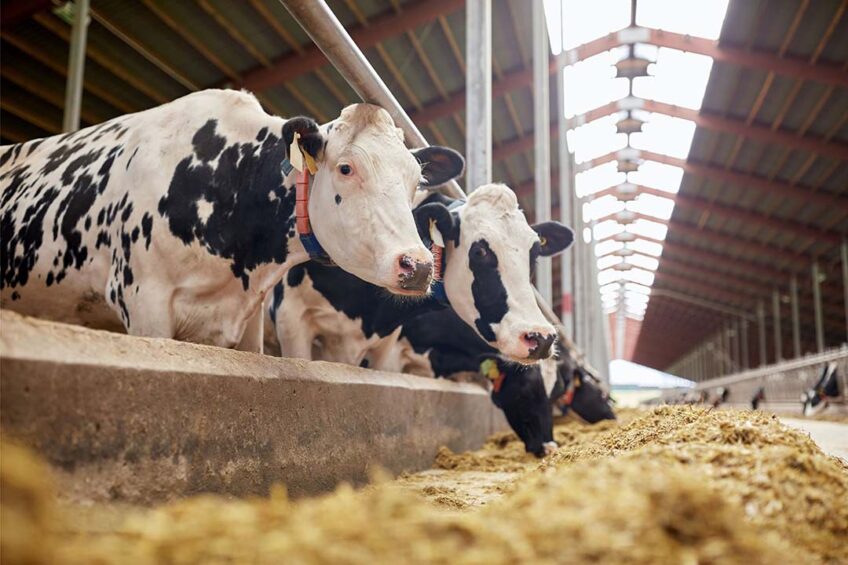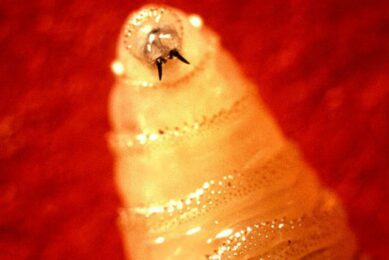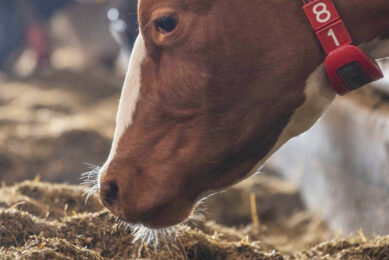What are top-producing US dairy herds doing?

Every farm is different, but it can be said that one aspect of dairy farming is that it is a competitive sector. Therefore, knowing how other dairy farms are producing and getting the most out of their cows in the best possible way provides knowledge that can help other operations progress. Karen Luchterhand, PhD, C.O.W.S. program lead/ruminant technical services manager at Novus International, Inc., sheds light on US dairies in the Northeast and Midwest and how they get ahead of the competition and maintain a top-producing status.

What are the main trends seen in top-performing dairy herds in the US?
According to the analysis, the housing system has a huge impact on milk yield. Top dairy farms are investing in facilities with mechanical ventilation to ensure a more consistent environment throughout the year. To take it a step further, our data shows those that provided additional heat abatement like fans and soakers in the pen had higher milk yields than those that didn’t. This demonstrates the impact heat stress can have on production. Lastly, dairy farms that used headlocks as a feed barrier and had cleaner stalls before milking produced more milk. So, according to our data, both heat abatement and stall management strategies make a difference.
For some perspective: we rank the herds in our database by combined fat and protein pounds per cow. There were differences among the top-performing dairies, but some commonalities included using deep or shallow-bedded stalls, milking 3 times per day, and feeding more than once a day. All the top 10 component herds were Holstein-based, and all had additional pen-level heat abatement.
Can you tell us more about data and how this has evolved to serve the sector better?
The data comes from our dairy farm assessment – the C.O.W.S. Program – available to customers in the USA, Canada and Mexico. For each assessment, we go to the farm and collect over 600 data entry points.
Thanks to feedback from dairy producers and nutritionists who have experienced the programme, we continue to build from the original outcome-based cow measures such as lameness and hock injuries and the supporting management and facility design measures to trends from what we were observing in our database.
As new technologies and practices are adopted, we evaluate them to see if they can contribute to our findings in a way that is meaningful to our customers.
It is often said that at dairies even the smallest of changes can have a big and positive impact on the farm and the bottom line – what kind of small changes make a big impact, in your opinion?
We often come across farms that exceed the recommendation of cows being less than 3.5 hours away from the pen. It may go unnoticed because the time the cows are going through the parlour doesn’t change, but they are being brought up to the holding area 30 or 40 minutes before the first cow steps onto the parlour platform. Something as simple as painting a line in the holding area that the current pen must reach before the next pen can be brought up to the dairy can reduce that time away from the pen.
This is just one example and, of course, there are bigger investments like converting a naturally ventilated barn into a tunnel ventilated barn, replacing or changing the stall base and re-pouring curbs to increase stall length. All of these are shown to improve cow comfort but require both financial and time commitments to accomplish.
What about optimising dairy cow diets – what are you seeing here?
Nutritionists are not only precision feeding by balancing for amino acids, for example, but are also ensuring the diet that is on paper is the diet the cows actually receive at the feed bunk. By working with the feeders and managers, they can ensure cows have access to that diet throughout the day and night. They are also shifting to not only feeding cows by stage of lactation but also by lactation number to feed for specific needs at each stage of life.
We all know that feed is a major cost; what are farmers doing to combat this issue to maintain a profitable business?
Due to the high cost of feed ingredients, dairy producers are investing in ways to minimise shrinkage. Some have started building feed centres to reduce shrinkage and improve the efficiency of mixing diets. Also, producers are scrutinising every ingredient in the diet to ensure a return on investment. Today, not only are the forages being analysed but the co-products are also being sampled to ensure the products purchased are creating a measurable benefit for the cows.
From calf to a high-producing dairy cow – how can producers ensure a well-performing herd from the very start?
Research shows it starts in utero. The heat stress that a dam endures during her dry period affects both her milk production and the next 2 generations’ lactation potential. Any challenge (health-related or physical conditions such as corkscrew hooves) will have a lasting effect. For instance, calves that have pneumonia early in life are often culled even before making it to the milking herd or culled shortly after due to poor performance. Growing heifers that experience a wart (digital dermatitis) are over 85% more likely to have another wart after they calve. We’ve seen that investing in facilities and management that promote good health and heat abatement can pay dividends today and for future generations.
There are many stressful periods for dairy cows – what can producers do to have a more robust herd?
I would recommend that producers focus on cow comfort so that when the stressful periods come, the cows can better cope with such situations. Heat abatement, minimising lameness, providing comfortable stalls, and minimising the time cows are away from the pen and feed can all reduce the impact of those stressful periods when they occur.
What advice would you give to producers in order to maintain longevity and profitability in the sector?
The care and treatment the animals receive from in utero to a mature lactating dairy cow decide longevity and profitability. A heifer not meeting 85% of the mature cow bodyweight at calving means there was a gap in the calf or heifer programme that set her back from staying in the herd longer. Fresh cow problems (metritis, mastitis or ketosis) can indicate poor cow comfort in the dry pens or maybe a lack of feed availability or high stocking density that is resulting in additional stress on the animal. Then, when coupled with the stress of parturition, feed, and social changes, these cows succumb to metabolic and infectious diseases.
Each farm is going to have different bottlenecks blocking its goal of improving longevity and profitability. Working with trusted advisors can help producers identify bottlenecks and offer solutions to address those bottlenecks in their operations.
The information cited is based on data collected from over 1,500 dairy farm assessments in North America as part of the NOVUS C.O.W.S. Program.
The Dairy Global Newsletter
Sign up for our newsletter and receive all our need-to-know content three times a week.
Join 13,000+ subscribers
Subscribe to our newsletter to stay updated about all the need-to-know content in the dairy sector, two times a week.










